The more I think about it, the more it bothers me that I’m calling this amp a ‘clone’ of a Trainwreck Express. I guess a very significant and distinguishing aspect for the community regarding what those Trainwreck amps are all about is not just the circuit itself (especially since there are so many different versions out there now), but also the layout and parts choices. To be honest, I’ve never been a big ‘super secret expensive obscure capacitor’ kind of guy, although admittedly I sometimes use ‘special’ parts just for fun. I really don’t think it makes enough of a difference to use brand A caps versus brand B caps, especially if they’re the same type (e.g., PP, PE, Ceramic, etc.), but that’s a discussion for another day.
My idea behind this design was to take inspiration from the original idea and shape it into something ‘better,’ to improve it in a way that I believe makes for a great amp layout without altering what I consider to be the fundamental principles of these amps.:
- no master volume
- almost no high-cutting
- low voltages
- output transformer impedance
- operating points of preamp stages
To jump ahead for a moment, the amp is finished for now:
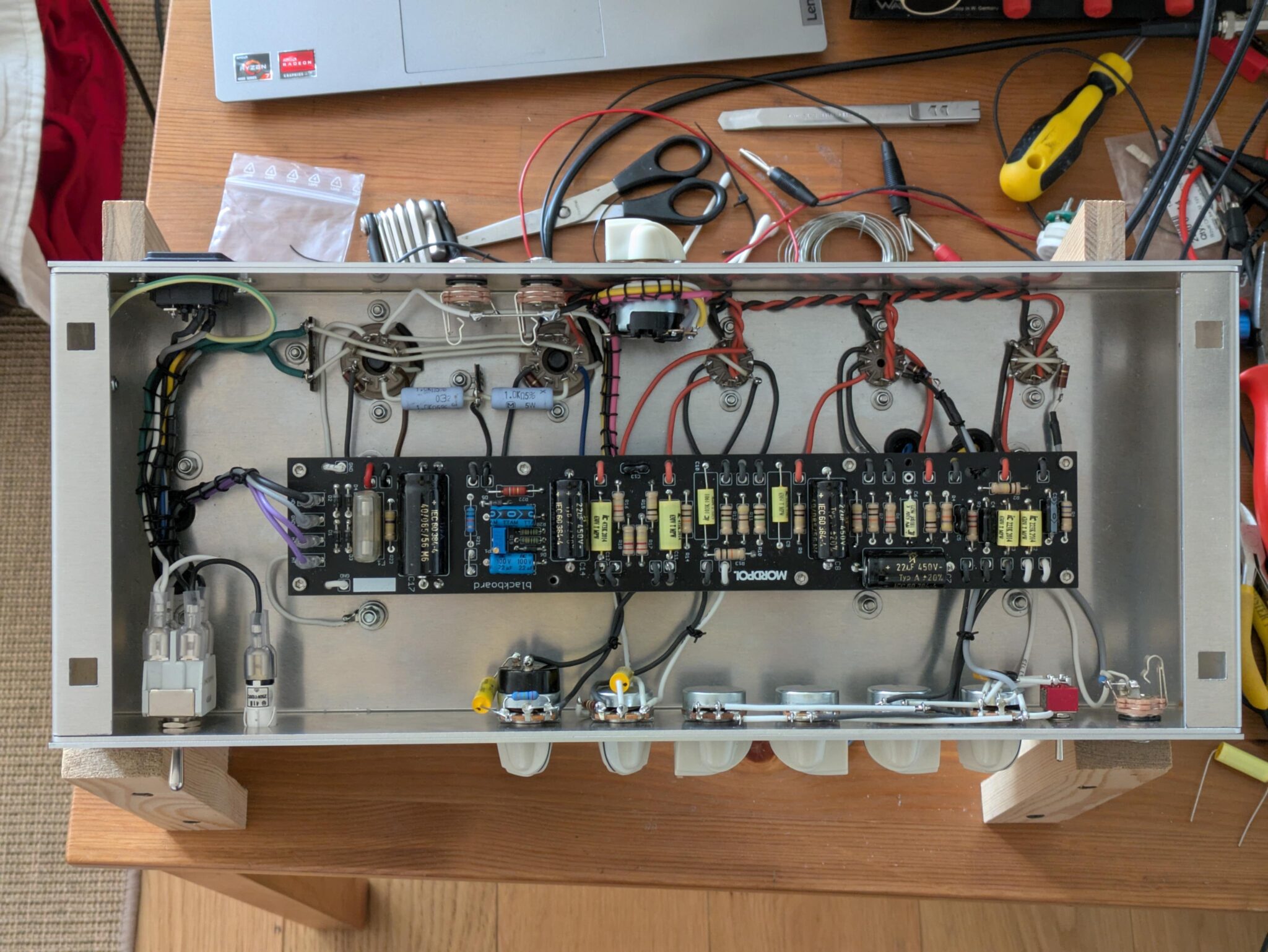
As I mentioned in another post, the PCB is my own design and it differs from the original layout in many areas because I believe the original layout has some flaws. I started this project as a reality check for my general amp and PCB design/layout skills, to validate some theories of part placement and signal/GND routing, and to create a version of this legendary amp in my own ‘style’ of amp design. It seems like it worked out…
So, besides being enormously loud and impractical for living room volume levels, it sounds absolutely amazing—very dynamic and sensitive to pick attack and guitar volume, with a very smooth kind of dirtiness. It has no discernible hum—nothing, zero, 0 (I haven’t measured it yet, to be honest, maybe I can find some mV of hum with a scope). There’s no oscillation whatsoever, although when turned all the way up, it is very close to completely going rogue. Voltage sag and ripple seem quite high due to cheapskate filtering (only 47µF for the anodes). It’s hard to tell at those levels, but there’s probably a lot of ‘ghost noting’ going on…
Anyways, I love how it sounds and it’s really fun to play.
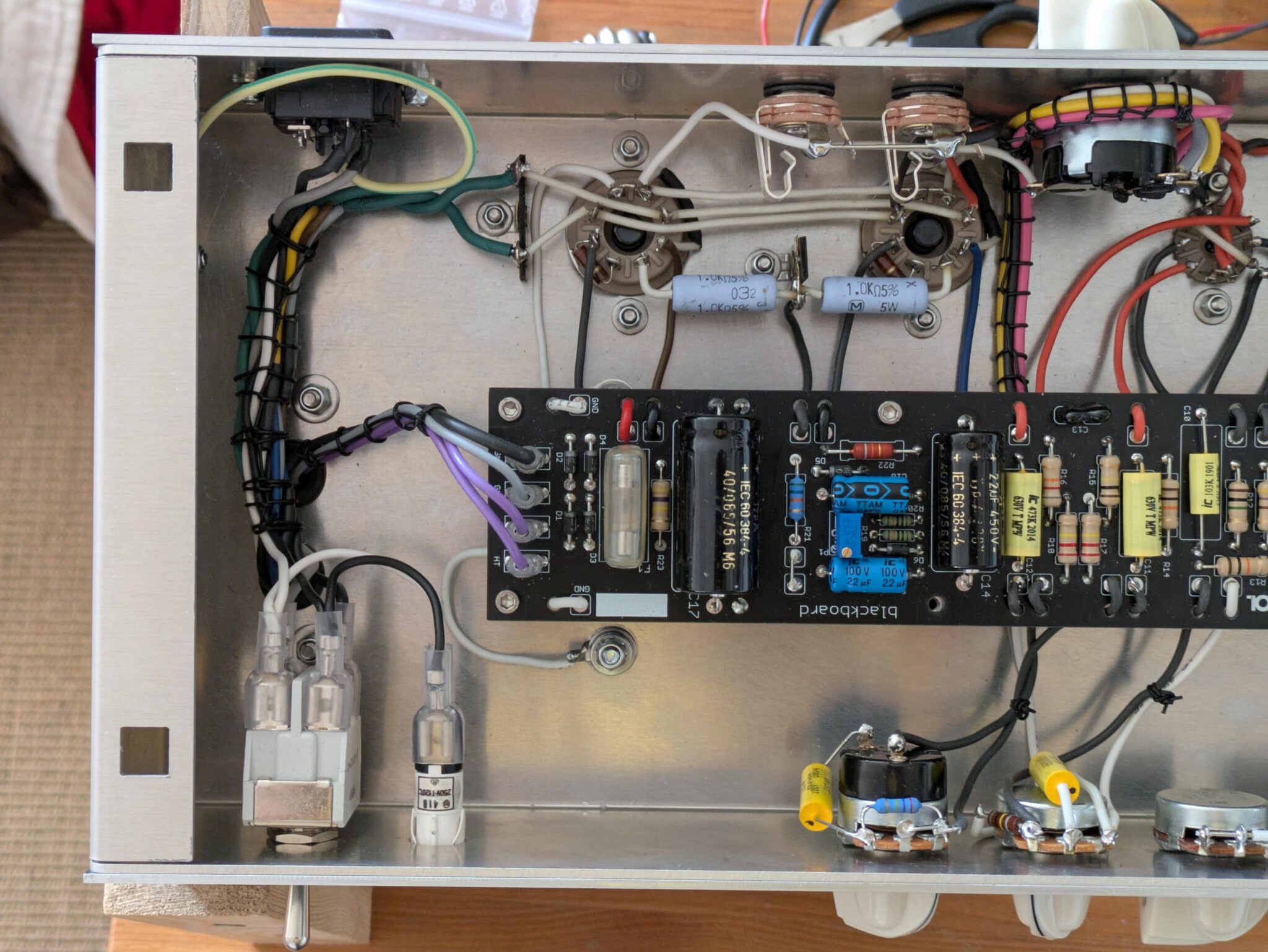
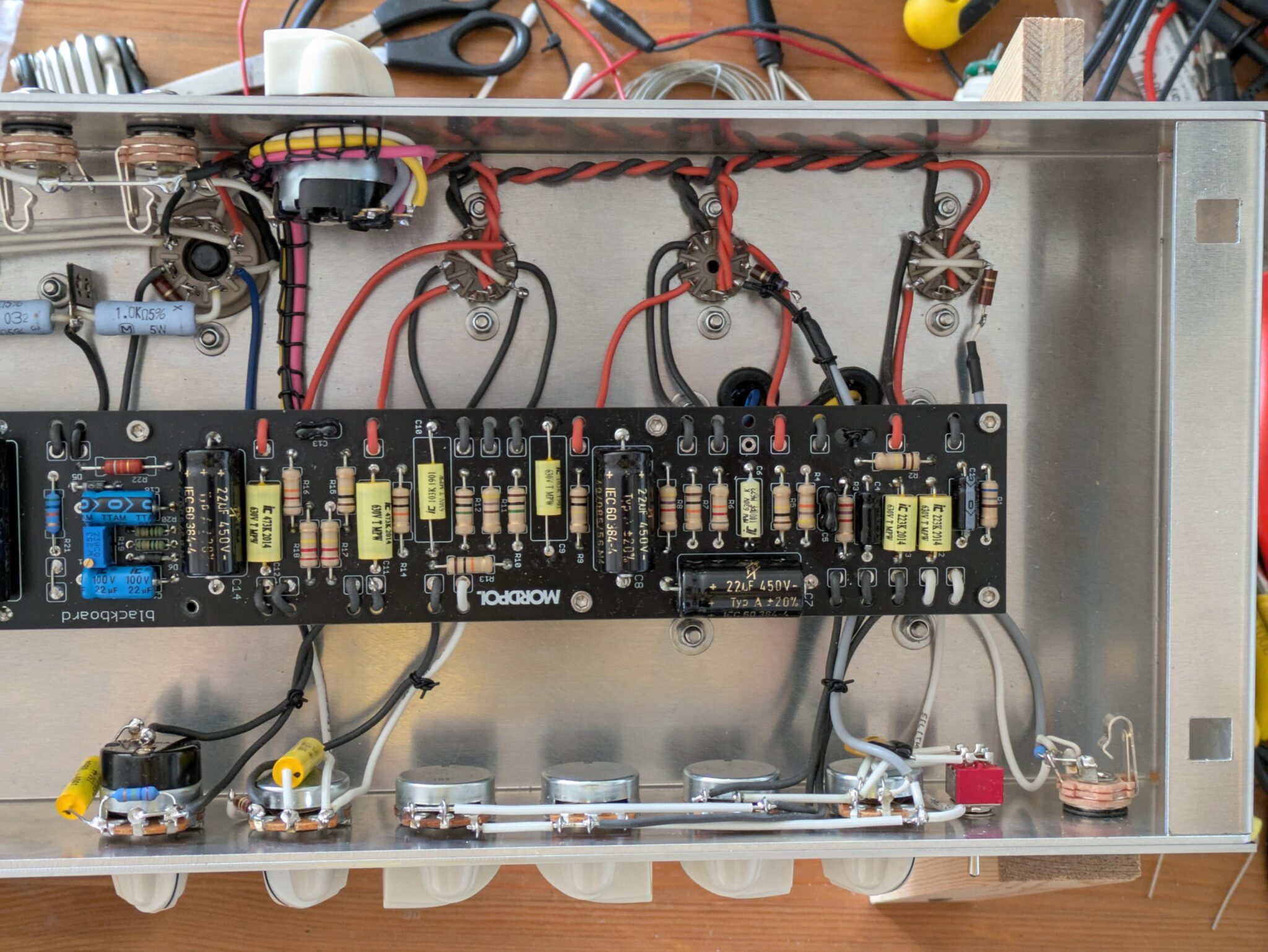
I found some old Philips EL34 tubes (mullards) that are a great fit, and they will spend the rest of their existence in there. Look at those beauties:
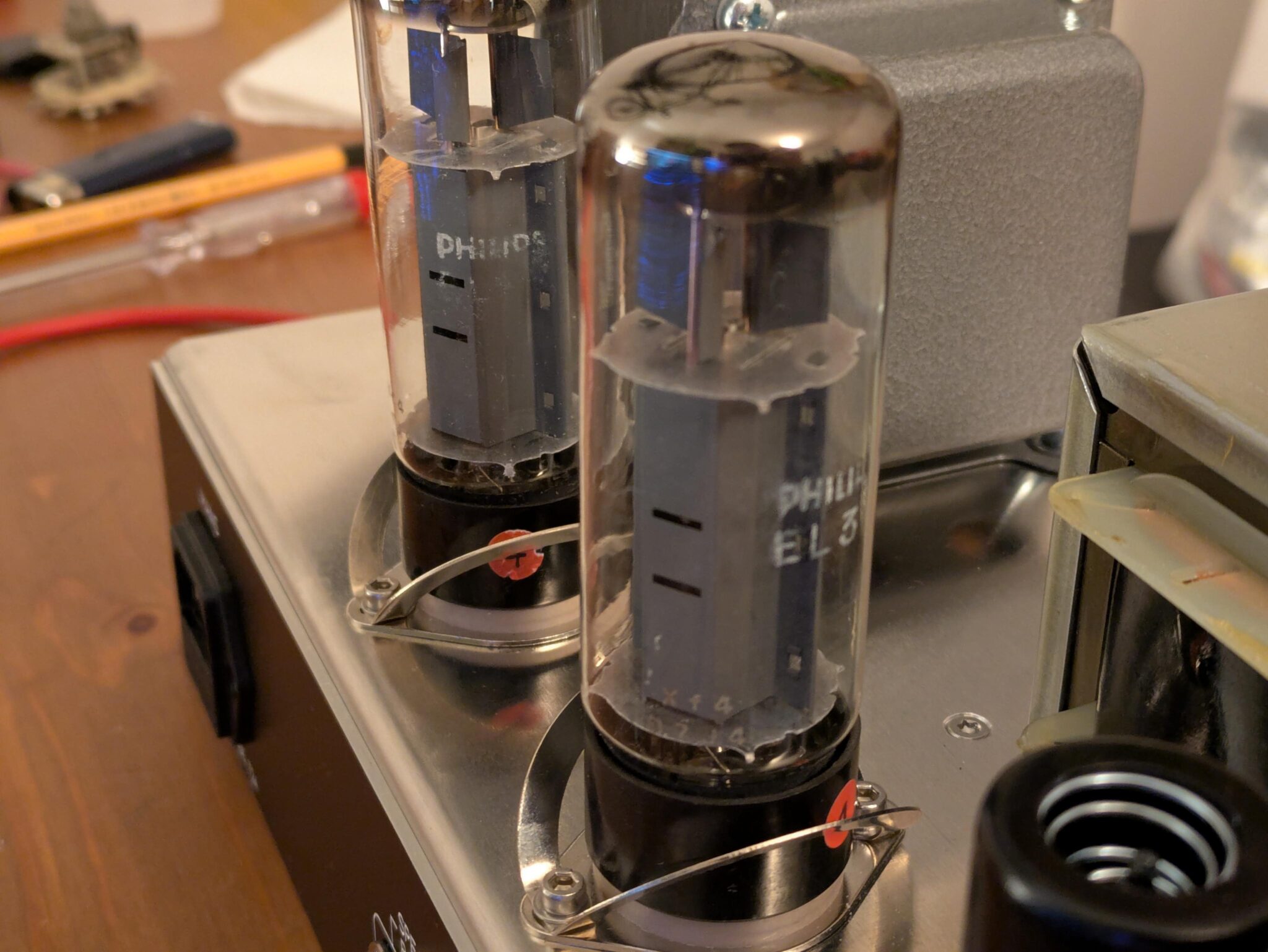
Quick shot of setting up and torture testing:
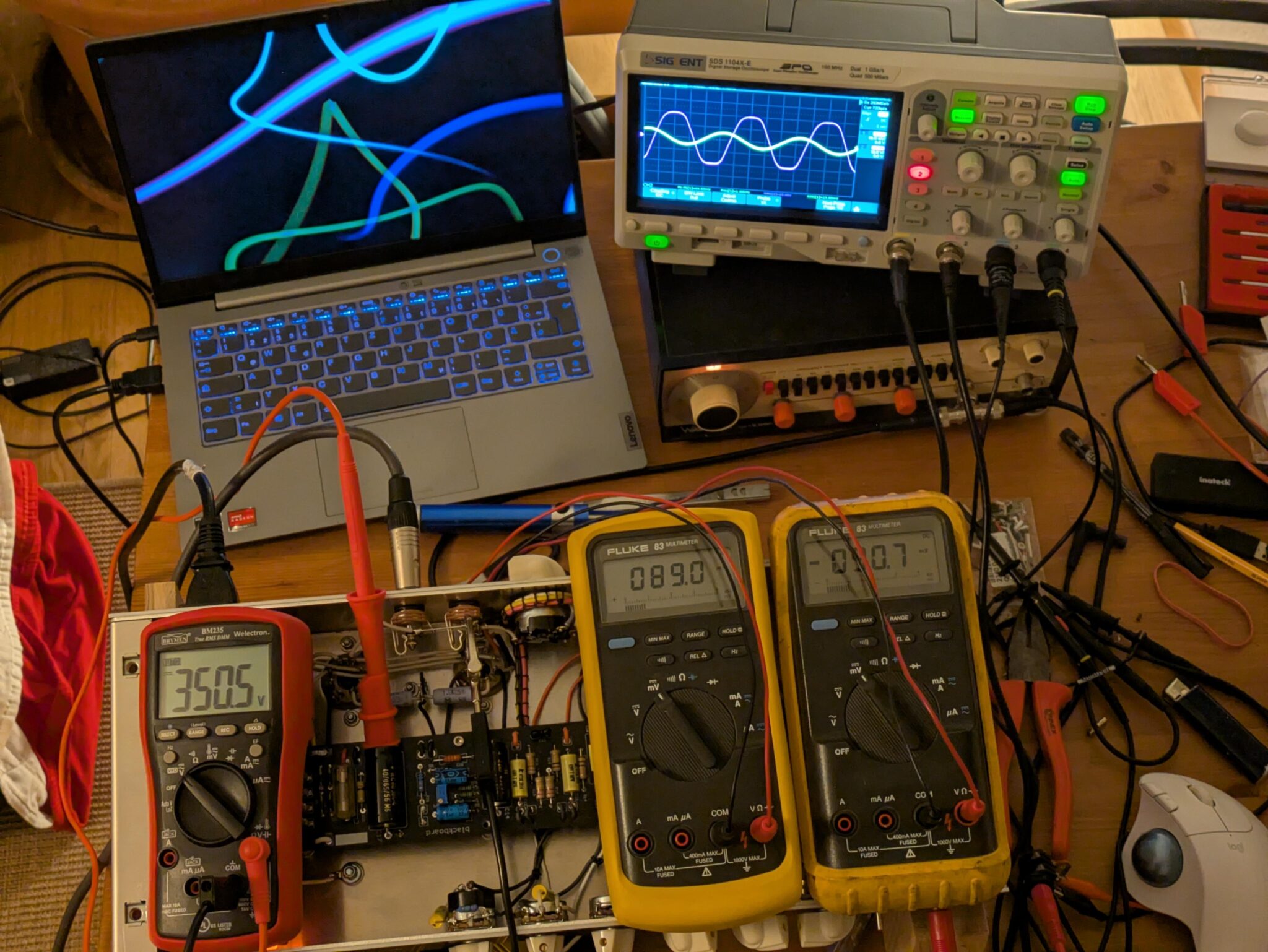
The next step will be making a nice headshell for it, but no curly flamed maple shenanigans. I have to admit that I find the visual appearance of those original Trainwrecks quite unappealing.
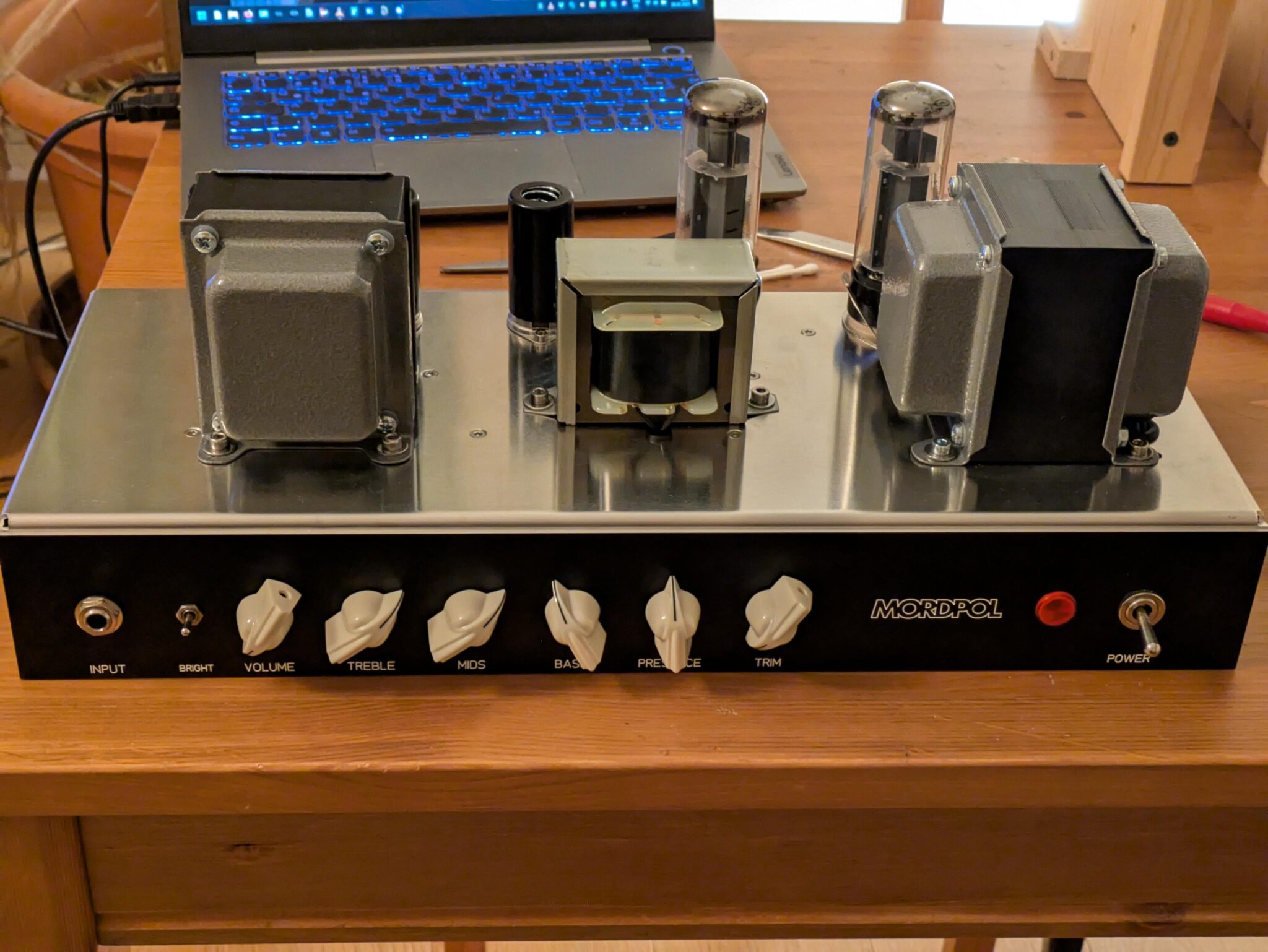


Leave a Reply